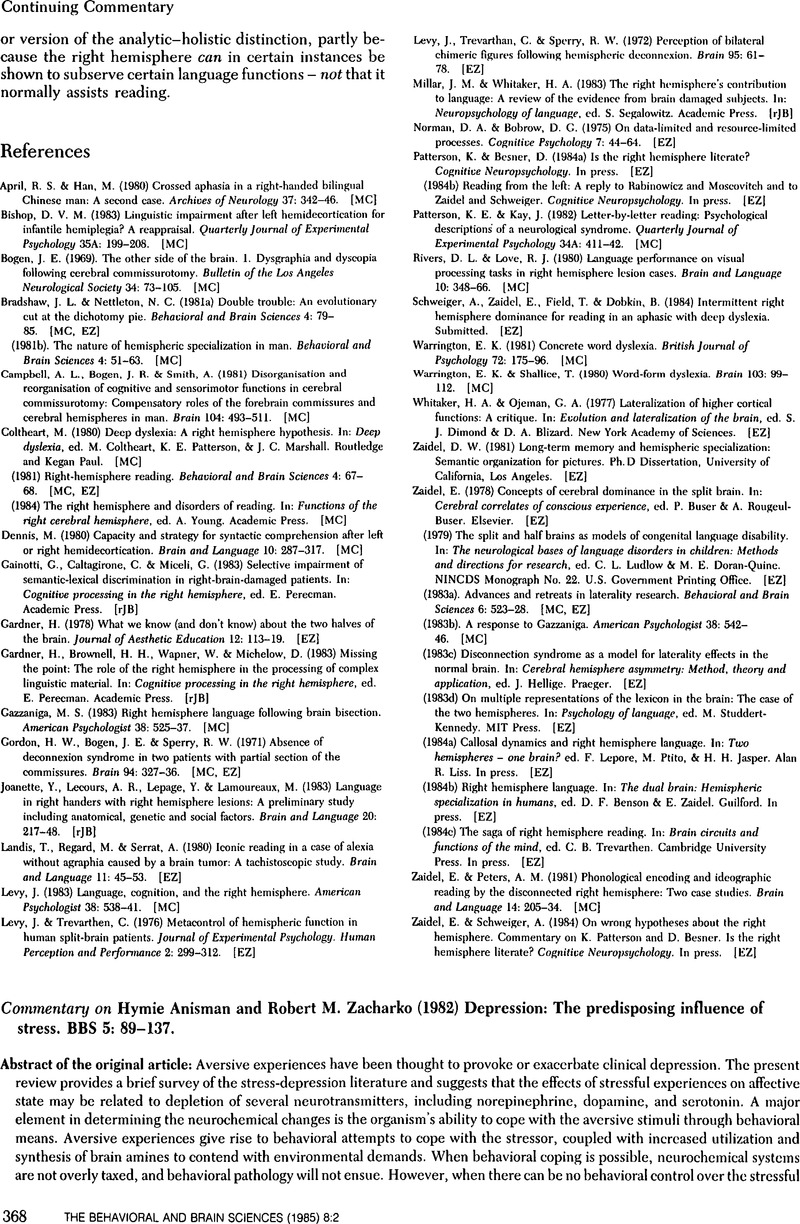Crossref Citations
This article has been cited by the following publications. This list is generated based on data provided by Crossref.
1988.
Psychological factors in preterm labor: critical review and theoretical synthesis.
American Journal of Psychiatry,
Vol. 145,
Issue. 12,
p.
1507.
Everly, George S.
1990.
Post-traumatic stress disorder as a disorder of arousal.
Psychology & Health,
Vol. 4,
Issue. 2,
p.
135.
Calarco, Margaret M.
and
Krone, Kathleen P.
1991.
An Integrated Nursing Model of Depressive Behavior in Adults.
Nursing Clinics of North America,
Vol. 26,
Issue. 3,
p.
573.
Everly, George S.
1993.
Psychotraumatology: A two-factor formulation of posttraumatic stress.
Integrative Physiological and Behavioral Science,
Vol. 28,
Issue. 3,
p.
270.
Everly, George S.
1993.
International Handbook of Traumatic Stress Syndromes.
p.
795.
Everly, George S.
1995.
Psychotraumatology.
p.
27.
Ursano, Robert J.
Fullerton, Carol S.
Epstein, Richard S.
Crowley, Brian
Kao, Tzu-Cheg
Vance, Kelley
Craig, Karrie J.
Dougall, Angela L.
and
Baum, Andrew
1999.
Acute and Chronic Posttraumatic Stress Disorder in Motor Vehicle Accident Victims.
American Journal of Psychiatry,
Vol. 156,
Issue. 4,
p.
589.
FULLERTON, CAROL S.
URSANO, ROBERT J.
EPSTEIN, RICHARD S.
CROWLEY, BRIAN
VANCE, KELLEY L.
KAO, TZU-CHEG
and
BAUM, ANDREW
2000.
Peritraumatic Dissociation Following Motor Vehicle Accidents.
The Journal of Nervous and Mental Disease,
Vol. 188,
Issue. 5,
p.
267.
Reuter, Martin
Netter, Petra
and
Janke, Wilhelm
2003.
Personality and reciprocal inhibition theory: The link between aggression and sexual reactivity.
Personality and Individual Differences,
Vol. 35,
Issue. 8,
p.
1765.
Everly, George S.
and
Lating, Jeffrey M.
2013.
A Clinical Guide to the Treatment of the Human Stress Response.
p.
173.
Everly, George S.
and
Lating, Jeffrey M.
2013.
A Clinical Guide to the Treatment of the Human Stress Response.
p.
401.
Everly, George S.
and
Lating, Jeffrey M.
2019.
A Clinical Guide to the Treatment of the Human Stress Response.
p.
545.
Everly, George S.
and
Lating, Jeffrey M.
2019.
A Clinical Guide to the Treatment of the Human Stress Response.
p.
259.
Lebedeva, Katherina A.
Allen, Josh
Kulhawy, Erin Y.
Caruncho, Hector J.
and
Kalynchuk, Lisa E.
2020.
Cyclical administration of corticosterone results in aggravation of depression-like behaviors and accompanying downregulations in reelin in an animal model of chronic stress relevant to human recurrent depression.
Physiology & Behavior,
Vol. 224,
Issue. ,
p.
113070.



